Each month, GCSE spotlights one Member organization and the importance of sustainability at the institution and the institution's role in informed environmental decision-making.
Florida Agricultural and Mechanical University
Florida Agricultural and Mechanical University (FAMU) is a public, land grant institution and Historically Black College or University (HBCU) located in Tallahassee, Florida, USA. FAMU holds a deep commitment to its mission to “enhance the lives of its constituents and empower communities through innovative teaching, research, scholarship, partnerships, and public service.” In November 2022, FAMU announced an exciting initiative to support that mission: in partnership with Aura Air, a leading global provider of smart air technology, FAMU established the new Indoor Air Quality (“IAQ”) Center of Excellence (COE).
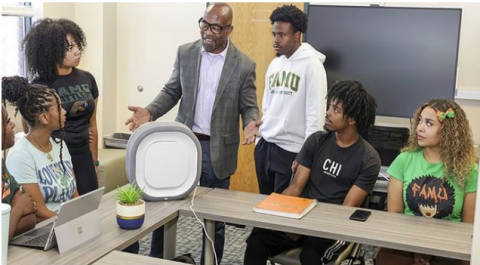
Led by Victor Ibeanusi, Ph.D., dean of FAMU’s School of the Environment, the COE will serve as the authoritative center for studying, testing, and analyzing indoor air quality in the State of Florida.
“Natural disasters are impacting the air we breathe, and the COVID-19 pandemic highlighted the role poorly ventilated spaces play in virus transmission,” Ibeanusi said. “We are proud to leverage our world-renowned research facilities, faculty, and student body and join Aura Air in leading the way in IAQ research and education to improve the health of Florida residents.”
The partnership combines FAMU’s prestigious science and environment faculty and programs with the technical know-how and innovation from Aura Air. Through the COE, FAMU, and Aura Air will address the growing risks of polluted and poorly ventilated indoor spaces and climate-related changes to IAQ on Floridians.
As the only Historically Black College or University (HBCU) with a comprehensive engineering college, FAMU is well-positioned to collaborate with Aura Air on IAQ research and development, as well as to address real-world consequences.
“We share a similar vision and commitment to education to drive change and to create the next generation of air quality professionals. Together, we can serve as a model for other research institutions and communities to develop their own COEs to increase awareness of the importance of air monitoring and purification,” said Roei Friedberg, CEO of Aura Air Americas.
The COE for IAQ will recommend methods and technology to effectively improve indoor air quality with active air monitoring, filtering, and ventilation. The Center will house IAQ-related studies and serve as an education hub to support a statewide IAQ program. Research is already underway at the COE with several Aura Air devices in place on FAMU campus. The COE for IAQ demonstrates FAMU’s high capacity for connecting quality science to decision-making, while providing first-rate teaching and learning experiences for students, faculty, and the wider community.
State University of New York College of Environmental Science and Forestry
The State University of New York (SUNY) College of Environmental Science and Forestry (ESF) is dedicated to the study of the environment, developing renewable technologies, and building a sustainable and resilient future through design, policy, and management of the environment and natural resources. ESF has a passion for protecting the health of the planet and a deep commitment to the rigorous application of science to improve the way humans interact with the world. They work to address the Earth’s most pressing problems and students come here because they want to be part of the solution.
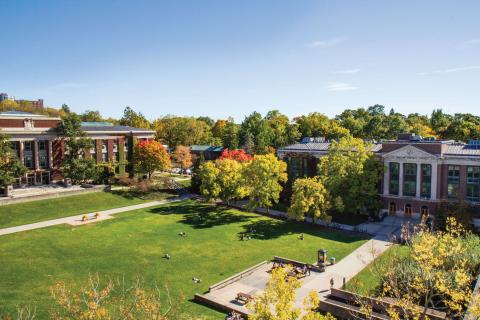
Research at ESF is remarkably diverse with contributions informing the management, design, structure and function of ecosystems and the relationships between people and nature including in the fields of aquatic ecosystems, bioenergy, biotechnology, biodiversity, ecology, genetic engineering, nanotechnology, remote sensing, wildlife disease prevention, environmental policy, and many others. ESF is a leader in integrating the energy and excitement of research with the formal requirements of degree and certificate programs. A high percentage of undergraduates and virtually all graduate students participate in research activity as part of their educational experience. Students live, study, and conduct research on the main campus in Syracuse, N.Y., and on 25,000 acres of field stations in a variety of ecosystems across New York State.
Sustainability is central to ESF’s mission of providing unique and impactful teaching, research, engagement and action-oriented programs that foster sustainable communities and environments. ESF fosters an environment that empowers members of the campus community to take individual actions to spark necessary change, but more importantly, they prioritize creating the ability to work toward large-scale, social change. This system change is needed so we may collectively work to improve our world to meet the needs of current and future generations.
ESF’s Sustainability Ambassadors program invites a designee from each office, division, or department to spend a few hours of (paid!) time each month serving as their group's sustainability educator and point person. The goal of the program is to facilitate sustainable practices on campus through faculty and staff peer-to-peer education and action.
Ardhi University
Ardhi University (ARU) is a public academic institution located in Dar es Salaam, Tanzania. Since initially being established as the Survey Training Centre in 1956, Ardhi has undergone institutional transformation, and finally became a fully-fledged University in 2007. The University’s vision is to become a leading center of excellence in knowledge generation and dissemination that is responsive to the dynamics of the national, regional, and global conditions.
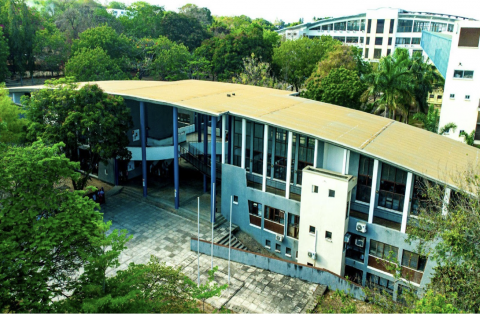
Ardhi University is unique in its integrated training and research approaches, focusing on developing knowledgeable, highly skilled, and competent graduates in the areas of land development, built environment, and environmental studies. It hosts a combination of degree programmes that are seldom found in one institution across Sub-Saharan Africa. The University’s programmes are oriented towards enhancing both rural and urban development activities that are cost-effective, have minimal environmental footprint, and are resilient to climate change and other disasters.
Ardhi is dedicated to contributing to sustainability in Tanzania, Africa, and the world at large. The University’s urban and rural training and research activities promote sustainable land administration, sustainable architectural and infrastructure design, and financially responsible development practices. Such practices are also aligned with developing resilience against disasters and adequate environmental management to ensure that today’s development does not compromise future demands. As such, the University hosts disaster management programs aimed at understanding, reducing, and managing threats, as well as strengthening the resilience of communities to climate change and other disaster impacts.
Through its school of engineering and environmental studies, the University also conducts environmental training and research focusing on waste management and resources management and recovery to reduce drivers of environmental degradation and greenhouse gas emissions. These are complemented by research and consultative support on low-cost construction materials, among others, that are implemented by the University's Institute of Building Research.
In response to the increasing challenges faced by rapidly urbanizing areas in Africa, Ardhi University hosts the African Centre for Sustainable Cities Studies, which aims to build capacity in education, research, innovation, and societal outreach to foster an inclusive and sustainable built environment in the city of Dar Es Salaam. The Centre has three core missions:
- Organizing and facilitating participatory and interdisciplinary research
- Overseeing education and training activities
- Coordinating inclusive societal outreach in sustainable cities-related issues
The Centre seeks to ensure that city policies, strategies and plans are informed by best practices and are tailored to local contexts, and strive to ensure that cities are more livable, resilient, and sustainable for all.
Franklin & Marshall College
Franklin & Marshall College (F&M) is a liberal arts college in Lancaster, Pennsylvania with a student population of 2000. Founded in 1787, F&M has a long tradition in the sciences, government, and public policy. At F&M, a strong emphasis is placed on student development and community impact. Students have the opportunity to deeply engage in these fields through hands-on, interdisciplinary learning experiences. Students have interned at US EPA, NOAA, and numerous NGOs such as the Chesapeake Bay Foundation. F&M’s Department of Earth and Environment has also regularly brought groups of 10-20 students to attend the Annual GCSE Conferences in Washington, DC since 2002.
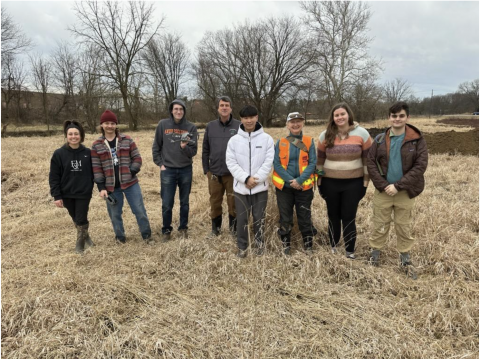
Closer to home, Department of Earth and Environment (ENE) students in their senior seminar worked in concert with the Office of City Planning in Lancaster City Government, to help complete the first citywide audit of carbon emissions in the state of Pennsylvania. This was a necessary prerequisite for the Chief City Planner, Douglas Smith (a 2007 ENE graduate), to create the carbon reduction plan, targeting 80% reduction in emissions by 2025.
F&M’s community impact extends far beyond carbon auditing: a Mellon Foundation grant supports F&M’s Center for Sustained Engagement with the City of Lancaster (CSEwL), sponsoring projects from street murals directed by F&M faculty, to stream restoration, to research on sustainable food, composting and urban beekeeping. Thanks to seed grant funding from CSEwL, ENE Prof. Eve Bratman established the Lancaster Compost Co-Op, an initiative led by volunteers that supports community-wide composting in Lancaster.
F&M’s campus also features a Center for the Sustainable Environment, which serves as a hub for sustainable programs and activities. The Center has a green roof, native plant gardens, and acts as home for the student Environmental Action Alliance and Campus Sustainability Committee. The Center also lends camping and hiking equipment for frequent student excursions, e.g. to Hawk Mountain Sanctuary or to the Appalachian Trail. Beyond the Center, the campus features a bike share program with numerous bike stations for use by any member of the F&M community.
Did you know?
65% students at F&M engage in research or one-on-one educational experiences under the guidance of a faculty mentor.
University of Oklahoma
Founded in 1890, the University of Oklahoma (OU) is the state’s flagship university. With a new strategic plan launched in 2020, OU is focusing research and creative activity to address real world challenges - including those complex, interconnected and often competing challenges that lie at the intersections of societal, environmental and energy systems.
Sustainability initiatives from the Office of the Vice President for Research and Partnerships build on a foundation of strong academic programs within our top ranked College of Atmospheric and Geographic Sciences and Mewborne College of Earth and Energy, among others. Our recently-established Institute for Resilient Environmental and Energy Systems (IREES) is one of four new research verticals designed to bridge disparate academic disciplines together to catalyze creative, comprehensive solutions to global challenges.
Work at IREES leverages existing strengths in three key thematic areas: Earth systems and global change, sustainable societies and low-carbon energy and infrastructure. By integrating expertise, investing in people and infrastructure and partnering with diverse collaborators, our approach seeks transformative solutions to enable a more sustainable, inclusive, and prosperous future.
For instance, the IREES Hydrogen Initiative is helping fuel a sustainable energy transition. A key partner in the tri-state HALO Hydrogen Hub, IREES is working with collaborators at top research universities in Oklahoma, Louisiana and Arkansas to ease entry into the hydrogen economy, serving as a connection point between industry, civil society and regulatory agencies as well as a resource for research, development and training.
IREES is also investing to expand the university’s world-class environmental and ecological monitoring field stations and laboratories. In collaboration with the Data Institute for Societal Challenges at OU, we are combining data from newly deployed state-of-the-art sensors with artificial intelligence and machine learning techniques to develop high resolution maps and predictive analytics for soil function. This information will be used to create a platform for data-driven, climate-smart research, education and land management.
To address complex environmental, human health and societal challenges across the Western Hemisphere, IREES has developed the Latin America Sustainability Initiative (LASI). LASI works to catalyze, support and scale collaborations with partners in Latin America through university-led projects focused on improving human well-being and the environments in which we live. We believe that research universities bring a unique collection of benefits to the table that includes regional trust capital, long-term workforce development, convergent research and development and connected stakeholder networks.
Did you know?
Oklahoma is known for its fossil fuels production. However, our state is a leader in clean energy production with nearly 45% from renewable resources and the third in the nation in wind-generated electrical production. Oklahoma continues to promote research and public-private partnerships to leverage vast wind, sun, and subsurface energy resources to lead the transition to clean energy systems.
The University of Oklahoma hosts the Oklahoma State Surveys for Biology, Geology, Archeology, and Climate. OU is a leader in graduating Native American engineering undergraduate students.
Northeastern University
Founded in 1898, Northeastern University is a global, experiential, research university built on a tradition of engagement with the world that ranks among the top 40 undergraduate institutions in North America.
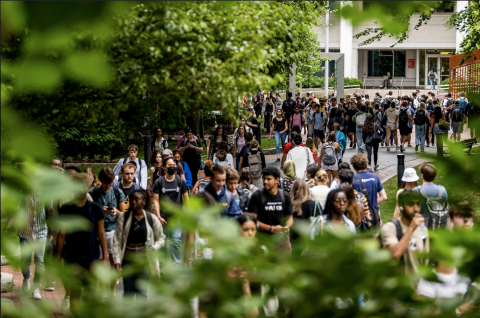
The university provides a variety of educational pathways for undergraduate and graduate students interested in sustainability and resilience, spanning multiple disciplines and program types. For example, graduate students may take a course in “Critical Infrastructure Resilience” or pursue a Master of Public Policy focused on sustainability and climate change, an MS in Security and Resilience, or earn certificates in Environmental or Sustainability Engineering.
Northeastern faculty and graduate students regularly help city governments, NGOs, and residents around the world improve their practices in the field through joint research and collaboration, including the City to City Impact engine run by professors Alicia Modestino and Carie Maultsby-Lute in Boston and Oakland and partnerships with Chief Resilience Officers (CROs). Northeastern has also conducted multi-year, multi-institution, multi-million dollar research projects on resilience funded by the National Science Foundation, US Department of Defense, NASA, and the US Department of Energy.
Beyond a focus on improving sustainability and resilience through external partnerships, Northeastern University’s Planning, Real Estate, and Facilities oversees the physical footprint of over 8 million square feet on 12 campuses in six states as well as Canada and the United Kingdom. The Department ensures that the planning, design, and construction projects, and the daily operations of its thirteen campuses incorporate green building, carbon reduction, climate justice, energy conservation, climate resiliency, and waste reduction measures while they are meeting the current and future needs of Northeastern University. Among other strategies for shrinking Northeastern’s carbon footprint are reflective roofs, groundwater recharge, landscaping, and water reduction measures.
From building back better and designing financial incentives to developing nature-inspired systems and equitable social capital, resilience strategies need to be multifaceted and interdisciplinary. Northeastern University has responded to these demands by investing in global resilience over the last several years. Based on the foundations laid by the founding director Prof. Stephen Flynn, the Global Resilience Institute (GRI) continues to lead new and important convergence research across colleges and disciplines. The Institute actively works to collaborate with other institutes across Northeastern University, including the Network Science Institute and the Institute for Experiential Artificial Intelligence. Founded by Professor Steve Flynn, and currently co-directed by Professors Auroop Ganguly and Daniel Aldrich, GRI continues to advance its global and national reputation and thought leadership through the development of multi-faculty research products as well as growing investments in novel interdisciplinary capabilities for responding to strategic opportunities.
Interamerican University of Puerto Rico - Metro Campus
The Interamerican University of Puerto Rico (IAUPR) has a long history of serving its community. Founded in 1912, the Interamerican University has been instrumental in addressing societal needs in Puerto Rico, especially in service professions such as education, social work, and health.
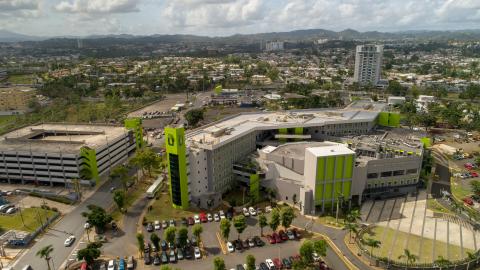
The Metro Campus (MC), established in the 1960s, is found in Puerto Rico’s capital city of San Juan, with a mission to serve students from diverse cultural and national backgrounds with an education geared toward the development of leaders and entrepreneurs who are committed to making significant contributions to society. These contributions are based on the values of service, democracy, and the reaffirmation of Interamerican University of Puerto Rico’s character as an institution with Christian roots and an ecumenical focus.
As an institution interested in the wellbeing of society, in 1993 the IAUPR established Center of Environmental Education, Conservation, and Interpretation (CECIA) for integrating environmental issues into higher education. Through CECIA, IAUPR develops social responsibility and critical skills in citizens to make informed environmental decisions. The flagship projects of CECIA are: EPA - Enhancing Partnership for Addressing Multimedia Environmental Risks in Poor Rural Communities of Puerto Rico and the Integrative Program to Develop Environmental Interpreters and Citizen Environmental Ambassadors. For the past 20 years, CECIA has partnered with state, federal and non-for-profit organizations to provide educational, outreach, and technical services and support. CECIA has positively impacted over 100,000 students from pre-K to the university level, as well as the public through these efforts.
Supporting Energy Justice
Economic crisis and the recent climate change events have placed a severe strain on the already fragile electrical system of Puerto Rico. The disastrous response has further burdened low income and disadvantaged communities’ energy needs. Therefore, to address and strengthen energy resources in our communities, IAUPR has partnered with the Instituto de Competitividad y Sostenibilidad Economica de Puerto Rico (ICSE-PR), for developing activities and educational resources aimed at promoting energy conservation, efficient use, independent production, and energy management. To support energy justice, the partnership has embarked on a campaign to educate the public about Law 17 of 2019, which seeks to apply justice principles of efficiency, quality, continuity, adaptability, impartiality, solidarity, and equity to address energy policy in Puerto Rico. In the last year, CECIA at Metro Campus has collaborated in energy justice symposiums and forums providing essential educational materials to students and faculty from underserved communities about energy laws, regulations, and justice in Puerto Rico.
Did you know: CECIA at IAUPR’s Metro Campus has received the Tree Campus award from the Arbor Day Foundation for 10 consecutive years for student and faculty efforts to reduce, recycle, reuse, and maintain habitats for fauna and flora. Efforts include fostering the campus as a biodiversity hotspot, and creating an urban garden where students develop entrepreneurship and leadership skills.
University of California - Davis
The University of California, Davis, and the College of Agricultural and Environmental Sciences (CA&ES) have helped shape California and the world in monumental ways for more than 100 years. The university is dedicated to solving critical issues surrounding food, water, energy, climate change, conservation and human health.
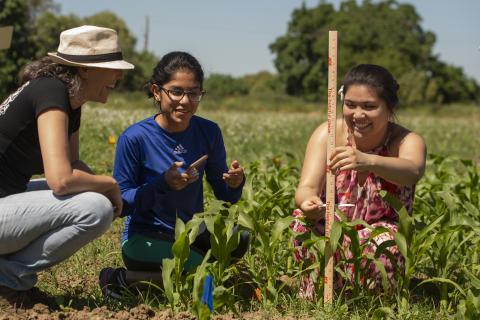
UC Davis offers more than 100 majors; within CA&ES that includes 29 undergraduate majors and 23 graduate degree programs focused on agriculture, the environment and human sciences.
The campus encompasses more than 5,000 acres with 2,300 acres of land dedicated to agricultural research and teaching on a variety of topics, including animal science, plant breeding, agricultural engineering and other subjects. Those lands are home to greenhouses, avian facilities, cattle operations, farms and animal barns.
Research out of the college has led to disease-resistant strawberries, a better understanding of grapevine diseases and techniques to reduce agricultural emissions. Recent research has shown how the buoyancy of water vapor influences low altitude cloud formation and climate in coastal areas. Other research projects include using seaweed and other food additives to reduce cattle methane emissions and developing a new form of cooling cubes that don’t melt and can prevent cross-contamination, while reducing water use. The college holds 305 active U.S. patents.
The university is home to dozens of centers, institutes and facilities with aims to make the world safer for a growing population. That includes the Tahoe Environmental Research Center, Bodega Marine Laboratory and Agricultural Sustainability Institute.
In addition, a new $40 million center for agricultural innovation will focus on agricultural and environmental sustainability. An additional $10 million in grants will be available for research into reducing crop waste, increasing water efficiency, developing new technologies, expanding access to nutritious food and making crops more resilient and sustainable in a changing climate.
The campus is nationally recognized as No. 1 in agriculture, plant sciences, animal science, veterinary medicine, biological and agricultural engineering and agricultural economics and policy. It is ranked among the top ten in agronomy, biodiversity education, ecology, entomology, environmental sciences, horticulture, nutrition, soil science and toxicology.
Did you know?
CA&ES houses several museums, including the Museum of Wildlife and Fish Biology, with thousands of unique specimens, such as a California condor, platypus and other animals. The R. M. Bohart Museum of Entomology is home to more than 7 million specimens and is the seventh largest insect collection in North America.
The University of Vermont
Since 1791, the University of Vermont (UVM) has worked to move humankind forward. Today, UVM is a top research university situated in the vibrant Green Mountain State. Students’ educational experience and activities are enriched by location — benefiting from the energy and innovation of Burlington and the proximity of forests, farms, mountains, and waterways of Vermont.
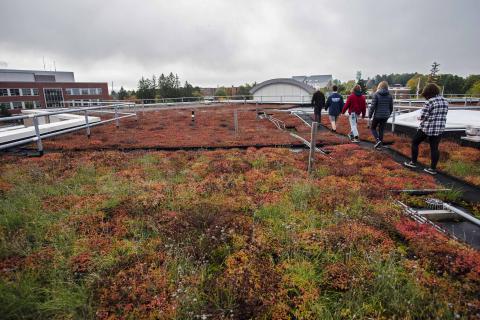
The study of the environment is a cornerstone of UVM, with undergraduate programs offered in five different schools and colleges and more than 20 graduate degree programs offered across a range of environmental fields. For over 50 years the university has been fostering interdisciplinary studies in environmental sciences; forestry; sustainability; food systems; wildlife and fisheries biology; ecological economics; environmental policy and law; parks, recreation, and tourism; geology; environmental leadership; and more.
UVM’s environmental programs emphasize hands-on learning through field work, internships, and student research. They also examine issues holistically, looking at the social structures that influence how people interact with the environment. The Rubenstein School of Environment and Natural Resources is home to many of UVM’s environmental programs. Its curriculum centers environmental justice and sets out to graduate leaders dedicated to a more sustainable and equitable future.
Driven by the belief that research should inspire action, UVM launched the Gund Institute for Environment to mobilize scholars and decision makers to understand and tackle the world’s most critical environmental challenges. Through partnerships with government, business, and NGOs, the Institute takes an integrated approach to developing solutions for people and nature. For example, UVM partnerships with USDA and USAID inform conservation-related decisions throughout federal government.
Globally, Gund Institute researchers lead studies with the International Platform on Biodiversity and Ecosystem Services and conduct research with partners in other countries to bring science to bear on public decision making, shaping policy dialogues from the UN to international agroecology networks. With over 250 scholars in Vermont and across the world, the Institute brings together a network of recognized researchers from diverse disciplines, seeking to match the urgency of our environmental challenges with bold action.
Did you know?
The University of Vermont owns and manages 10 natural areas, 4 research forests, an ecosystem science laboratory and hybrid-electric research vessel on Lake Champlain, and a research outpost on the top of Mt. Mansfield – the tallest mountain in the state.
Moravian University
Founded in 1742 on a belief that education is essential for all, Moravian is the 6th oldest college in the United States. Part of the institutional mission is that Moravian prepares each individual for transformative leadership in a world of change. Through the environmental science and studies programs, along with many other academic programs and co-curricular activities, Moravian mentors students to investigate and address environmental change locally and globally, and are guiding them to become leaders who, through a liberal education, can help create a more sustainable future for people and the planet. Moravian strongly believes that working collaboratively and serving the larger community is critical to fulfilling our mission.
Moravian has been a member of the Global Council for Science and the Environment (GCSE) since the 2009–10 academic year, and over the years have participated in the Council of Environmental Deans and Directors (CEDD), the GCSE Leaders Alliance, and the delegation to the Conference of the Parties to the United Nations Framework Convention on Climate Change (UNFCCC) .
Moravian students and faculty have helped the City of Bethlehem 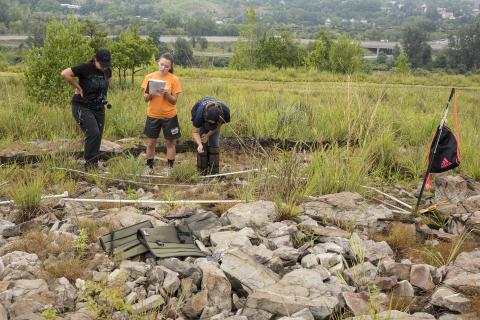 develop its climate action plan and the regional planning commission develop their greenhouse gas inventory. Since 2007, students have conducted research at the Palmerton Superfund Site, providing critical scientific data for the responsible party and state and federal agencies that has guided the revegetation efforts and adaptive management of part of the site.
develop its climate action plan and the regional planning commission develop their greenhouse gas inventory. Since 2007, students have conducted research at the Palmerton Superfund Site, providing critical scientific data for the responsible party and state and federal agencies that has guided the revegetation efforts and adaptive management of part of the site.
Not only do Moravian faculty and students “think globally, act locally,” they also act globally. Moravian has been an official observer for the UNFCCC since 2009. Their students and faculty attend as researchers, activists, and global learners. One faculty member plays a leadership role on the Research and Independent NGOs constituency group and on task forces for the Technology Executive Committee. The institution is also involved in a National Science Foundation funded Research Coordination Network: the Youth Environmental Alliance in Higher Education that aims to develop young leaders at the undergraduate and graduate level who can work at the science—decision-making interface within the UNFCCC and the Sustainable Development Goals. Moravian faculty and students also participate in research on biodiversity, conservation science, and sustainability through the Rocky Mountain Sustainability and Science Network (a partnership of higher education institutions, a private 501 3C organization, and the National Park Service) and in Costa Rica, in conjunction with the Camaquiri Conservation Initiative.
Did you know?
Students, alumni, and employees participate in the campus sustainability committee that, in 2015, created the Greenhound Fund. Funds from this account pay for campus projects designed to have a positive impact both on the environment and institutional budget. Accumulated savings over time pay back the money invested in the project.